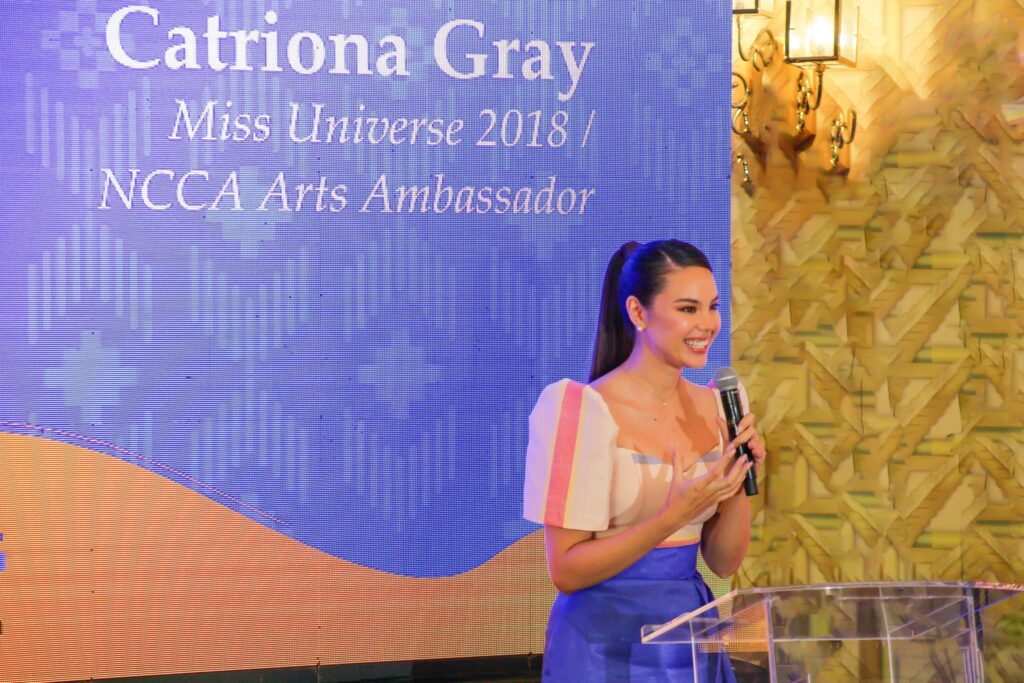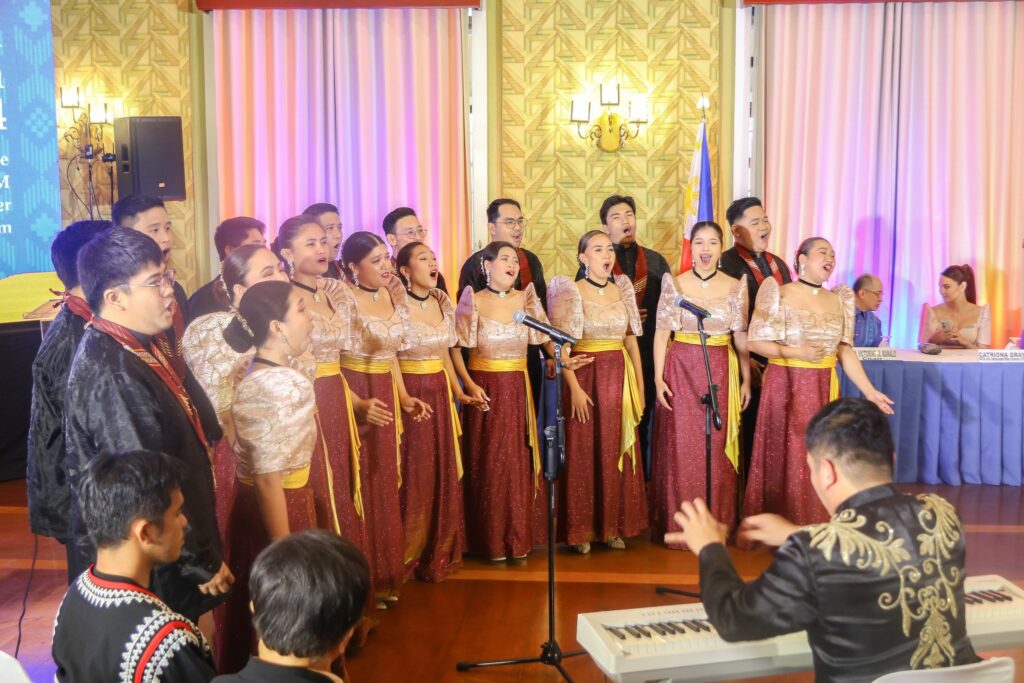Catriona Gray, the Philippines’ best Miss Universe who is also on her fifth year as the National Arts Month Ambassador, was asked the question: Is the celebration of National Arts Month still relevant?

Her answer: “Art is essential. The arts are a way of communicating, a vessel that is not contained within the pages of a book, allowing us to share our history and our culture in ways that can connect across languages and even allow other people from other places of the world to learn about us as a people, to appreciate what makes us uniquely us, what our unique characteristics are as a country, as a community. That is why the National Arts Month celebration will always be relevant.”
Perfectly said.

The annual arts celebration is now more than three decades and three years old. This year’s celebration is centered on the flagship projects of the Subcommission on the Arts led by the head of the National Committee on Music, Commissioner Arvin Manuel R. Villalon, along with the heads of the other six national committees: National Committee on Architecture and Allied Arts’ Cathe Desiree S. Nadal; National Committee on Cinema’s Mahar Sulayman “Butch” L. Ibañez; National Committee on Dance’s Dr. Lordinio A. Vergara; National Committee on Dramatic Arts’ Eduardo P. Perez; National Committee on Literary Arts’ Niles Jordan D. Breis; and National Committee on Visual Arts’ Dr. Dennis E. Montera.
The opening ceremony is slated on 23 February at Rizal High School in Pasig City and will feature a diverse array of performances, immersive workshops and engaging talks meant to empower the young minds attending the event.
For the flagship programs per National Committee, expect seminars and workshops, a non-competition regional film festival, dance concerts, a community-based theater festival, space provision for music groups and artists and the Ani ng Dangal or harvest of honors.
At 33 years old, the National Arts Month also needs an impact evaluation by the NCCA’s Project Monitoring and Evaluation Division.
All the exhibits, seminars and workshops implemented over the past 30 years – what has been the concrete outcome of all of these efforts, going beyond the awareness and appreciation sphere of the celebration? How to quantify and qualify proof from all the warm bodies and institutions that have been involved in the celebration that the NAM was and is indeed the reason for their deeper love and support for Filipino arts and culture?
Which artists have developed and continue to develop their artistic passions through the help of the NAM? And how to verify that the Arts Month is being embraced not only within the artistic and cultural sectors but also by the masses?
Because, chances are, if you ask ordinary Filipinos the significance of February to them, their answers will always be Valentine or Chinese New Year, and hardly the state-funded celebration meant to spotlight homegrown culture.
When it comes to legitimate and professional theater groups, what kind of connection, motivation and support do they get during the NAM? On the other hand, is there sustained support for community and university-based theater groups?
Has the Committee on Music considered implementing a mandate that during Arts Month, OPM has to be played more on radio and performed in musical variety shows on TV.
The Committee on Cinema seems distant and quiet on the raging issue of the dwindling audience for Filipino movies, and there appears to be no official stand or solution to exorbitant cinema ticket prices. Why?
There are no recommendations for Filipino movies the general public must watch, or NCCA sponsored block screenings of contemporary films. Why is this not happening?
The National Performing Arts Companies Act was signed by President Rodrigo Duterte five years ago. But since it became law, no movement about it has been read or heard, when the National Arts Month is the perfect platform to announce and herald new national performing arts companies since there are already implementing rules and regulations set.
Will it take another five years, and a new president at that, before we hear about the law finally being implemented?
Let us hope that the leaders and stakeholders of the arts sector are conscious of their responsibilities and the power of the arts for transformation, revolution and nation-building — precisely the reason the National Arts Month is being celebrated every year.

As Gray put it in conclusion: “Art is deeply personal. It speaks volumes about who you are as a person. When we come together to appreciate art, we also celebrate it, we elevate it. We come to appreciate the discipline, the skills, the accumulation of talent, the dedication to craft and the expression of self. And when we celebrate it, we bring our friends, we tell our family, we allow it to be more than us, and in that way we elevate it so that more people, more eyes, more ears, more hearts can feel the value, the authenticity and the power that the arts hold.”
